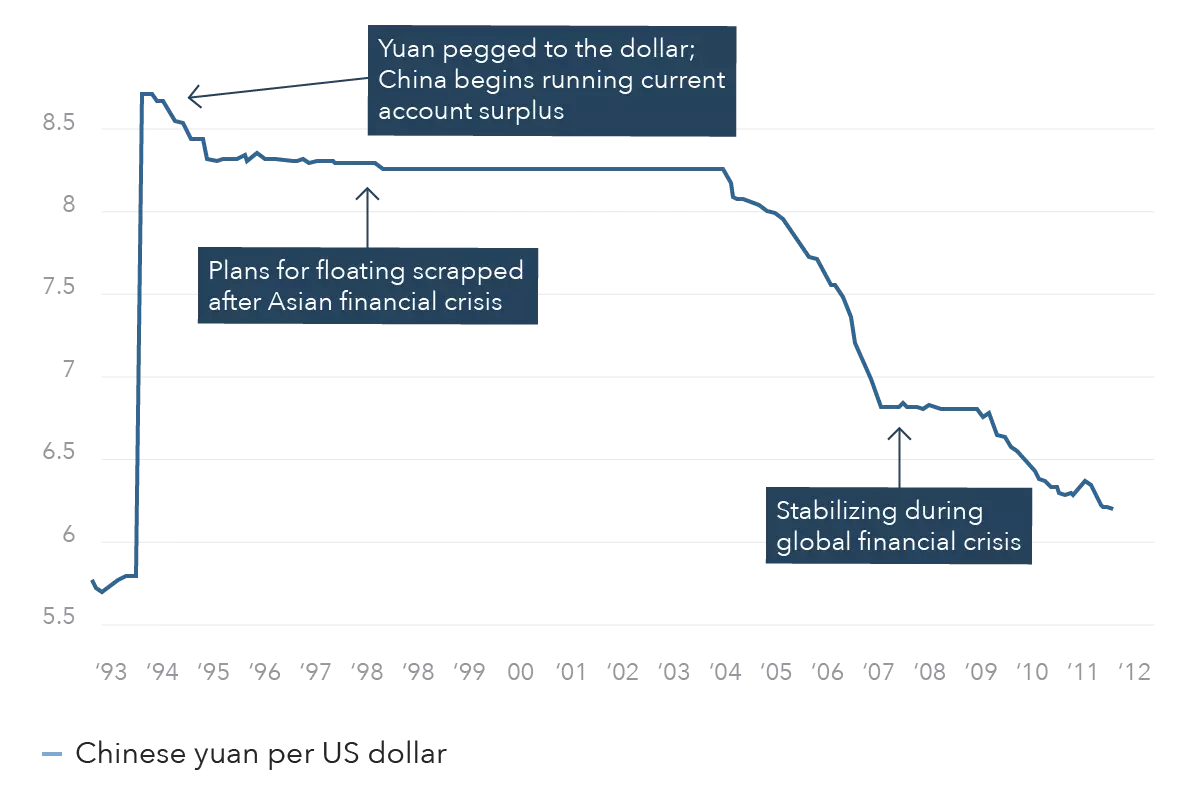Currency peg definition
What is a currency peg?
A currency peg is the governmental policy of fixing the exchange rate of the nation’s currency to the currency of another country. This results in a stable exchange rate policy between the two. A currency peg is sometimes referred to as a fixed or pegged exchange rate.
Many countries choose to peg their currencies to the US dollar. This is because the USD is the world’s reserve currency and most international transactions are done in USD.
A pegged exchange rate may be important for trade-reliant countries, as well as those who try to keep their currency value low to maintain competitive pricing, as it can alter the value of imports and exports.
Learn how to trade forex
Discover how to take a position on currency pairs – including how leverage works in forex trading.
Example of a currency peg
An example of a currency peg is that of the Chinese yuan against the US dollar. It was fixed at ¥8.28 to $1 from 1994 to 2005, after which the Chinese government allowed the yuan to appreciate by 2.1%. After this, it was repegged to a basket of other currencies.
China is known for its enormous exports market, especially the high volume of products it ships to the US. Because the yuan is a relatively weak currency, it benefits the Chinese government to peg the yuan against the US dollar, because it keeps the costs of exports down. However, this led to US accusing China of currency manipulation.

Cheaper imports also benefit the American retailers that sell the products. This is because it lowers the cost of development and manufacturing, ultimately impacting the business’s bottom line.
Another example of a currency peg is gold. In the 20th century, many countries pegged their currencies to the price of gold, because the metal is considered a safe haven. However, this is unusual as only one currency is involved, which is pegged to a commodity.
Currency peg vs floating exchange rate
A currency peg, or a fixed exchange rate, is determined by a country’s government or central bank. It will only fluctuate within a predetermined range, unless decided otherwise.
A floating exchange rate refers to a currency that has its price determined by supply and demand factors relative to other currencies. Floating exchange rates are often seen as fairer and more efficient than pegged rates.
Pros and cons of a currency peg
Pros of a currency peg
One of the biggest advantages of a currency peg is that it creates a win-win situation between countries that are within the currency peg. One country will pay less for goods and production, while the other country will make more profit. This is because the conversion rate between the two currencies is more favourable for both parties.
A currency peg also keeps the value of the currency low, supporting economic growth by inviting countries with more mature economies to invest. Lastly, because pegged currencies lower volatility, it reduces the risk of a currency crisis.
Cons of a currency peg
Maintaining a currency peg requires a central bank to monitor the supply and demand of each currency to ensure that there are no surprising spikes in either.
When the actual value of a currency no longer reflects the pegged price that it is trading at, problems arise for central banks, who have to work hard against excessive buying or selling of their currency. They’d do so by holding large volumes of foreign currency. And, the more reserves the bank has to maintain, the higher the inflation rate of the country.
Build your trading knowledge
Discover how to trade with IG Academy, using our series of interactive courses, webinars and seminars.